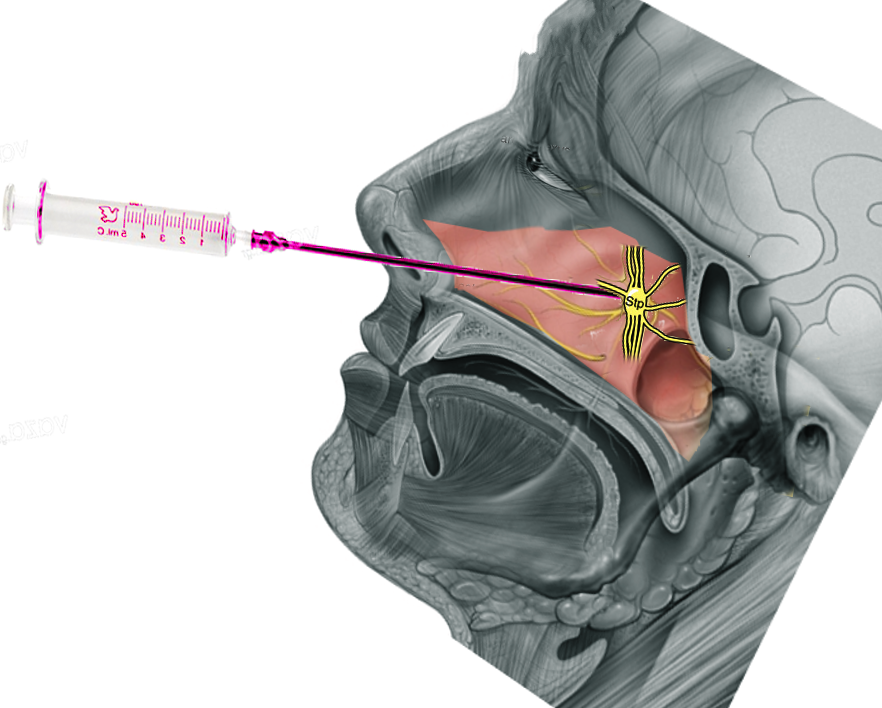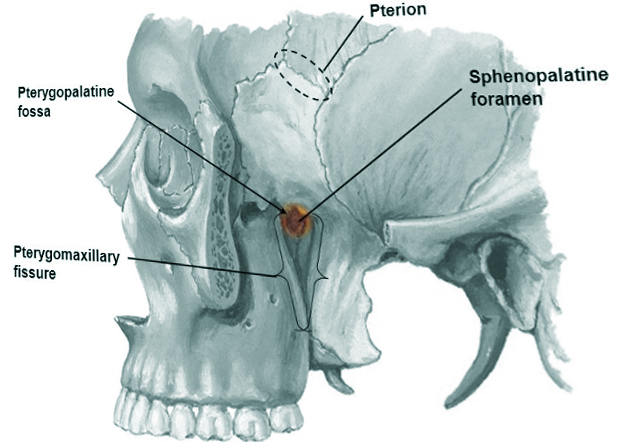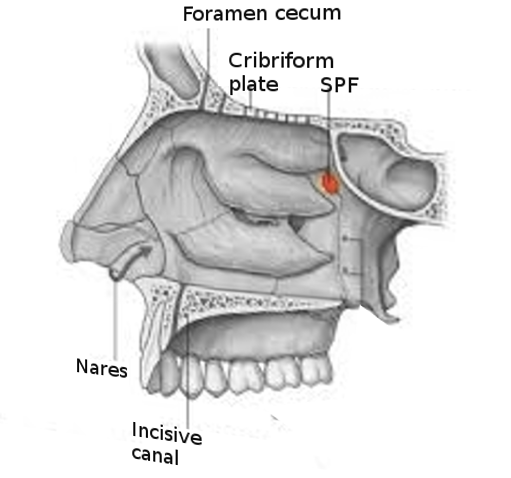[1]
Kim JH, Oka K, Jin ZW, Murakami G, Rodríguez-Vázquez JF, Ahn SW, Hwang HP. Fetal Development of the Incisive Canal, Especially of the Delayed Closure Due to the Nasopalatine Duct: A Study Using Serial Sections of Human Fetuses. Anatomical record (Hoboken, N.J. : 2007). 2017 Jun:300(6):1093-1103. doi: 10.1002/ar.23521. Epub 2017 Jan 27
[PubMed PMID: 27860365]
[2]
Pothier DD, Mackeith S, Youngs R. Sphenopalatine artery ligation: technical note. The Journal of laryngology and otology. 2005 Oct:119(10):810-2
[PubMed PMID: 16259659]
[3]
Gao L, Zhou L, Dai Z, Huang X. The Endoscopic Prelacrimal Recess Approach to the Pterygopalatine Fossa and Infratemporal Fossa. The Journal of craniofacial surgery. 2017 Sep:28(6):1589-1593. doi: 10.1097/SCS.0000000000003419. Epub
[PubMed PMID: 28863111]
[4]
Prades JM, Asanau A, Timoshenko AP, Faye MB, Martin Ch. Surgical anatomy of the sphenopalatine foramen and its arterial content. Surgical and radiologic anatomy : SRA. 2008 Oct:30(7):583-7. doi: 10.1007/s00276-008-0390-x. Epub 2008 Jul 23
[PubMed PMID: 18648719]
[5]
Wentges RT, Surgical anatomy of the pterygopalatine fossa. The Journal of laryngology and otology. 1975 Jan;
[PubMed PMID: 1113030]
[6]
Wareing MJ, Padgham ND. Osteologic classification of the sphenopalatine foramen. The Laryngoscope. 1998 Jan:108(1 Pt 1):125-7
[PubMed PMID: 9432081]
[7]
Scanavine AB, Navarro JA, Megale SR, Anselmo-Lima WT. Anatomical study of the sphenopalatine foramen. Brazilian journal of otorhinolaryngology. 2009 Jan-Feb:75(1):37-41
[PubMed PMID: 19488558]
[8]
El-Shaarawy EAA, Hassan SS. The sphenopalatine foramen in man: anatomical, radiological and endoscopic study. Folia morphologica. 2018:77(2):345-355. doi: 10.5603/FM.a2017.0104. Epub 2017 Nov 13
[PubMed PMID: 29131280]
[9]
Saraceni Neto P, Nunes LM, Caparroz FA, Gregorio LL, de Souza RP, Simões JC, Kosugi EM. Resection of the ethmoidal crest in sphenopalatine artery surgery. International forum of allergy & rhinology. 2017 Jan:7(1):87-90. doi: 10.1002/alr.21832. Epub 2016 Aug 11
[PubMed PMID: 27513601]
[10]
Pádua FG, Voegels RL. Severe posterior epistaxis-endoscopic surgical anatomy. The Laryngoscope. 2008 Jan:118(1):156-61
[PubMed PMID: 18025950]
[11]
Demiralp KÖ, Kurşun-Çakmak EŞ, Bayrak S, Sahin O, Atakan C, Orhan K. Evaluation of Anatomical and Volumetric Characteristics of the Nasopalatine Canal in Anterior Dentate and Edentulous Individuals: A CBCT Study. Implant dentistry. 2018 Aug:27(4):474-479. doi: 10.1097/ID.0000000000000794. Epub
[PubMed PMID: 30028392]
[12]
Catala M. [Embryology of the sphenoid bone]. Journal of neuroradiology = Journal de neuroradiologie. 2003 Sep:30(4):196-200
[PubMed PMID: 14566186]
[13]
BURDI AR. SAGITTAL GROWTH OF THE NASOMAXILLARY COMPLEX DURING THE SECOND TRIMESTER OF HUMAN PRENATAL DEVELOPMENT. Journal of dental research. 1965 Jan-Feb:44():112-25
[PubMed PMID: 14245486]
[14]
Konno A, Togawa K. Role of the vidian nerve in nasal allergy. The Annals of otology, rhinology, and laryngology. 1979 Mar-Apr:88(2 Pt 1):258-66
[PubMed PMID: 443720]
[15]
Honkura Y, Nomura K, Oshima H, Takata Y, Hidaka H, Katori Y. Bilateral endoscopic endonasal marsupialization of nasopalatine duct cyst. Clinics and practice. 2015 Jan 28:5(1):748. doi: 10.4081/cp.2015.748. Epub 2015 Feb 5
[PubMed PMID: 25918636]
[16]
Eordogh M, Grimm A, Gawish I, Patonay L, Reisch R, Briner HR, Baksa G. Anatomy of the sphenopalatine artery and its implications for transnasal neurosurgery. Rhinology. 2018 Mar 1:56(1):82-88. doi: 10.4193/Rhin17.181. Epub
[PubMed PMID: 29166425]




